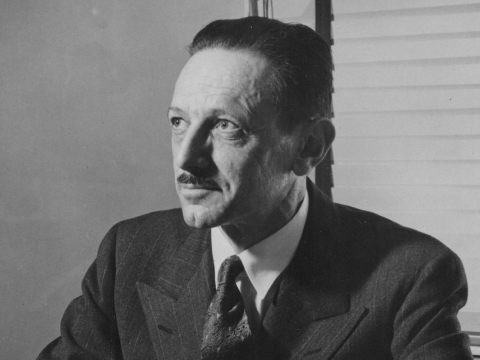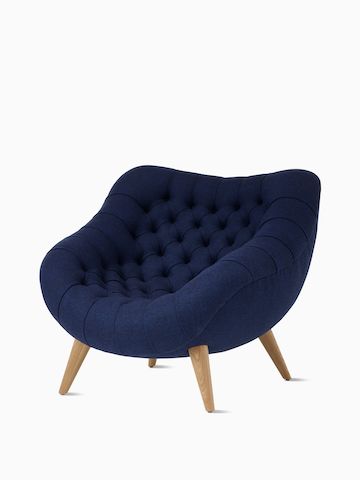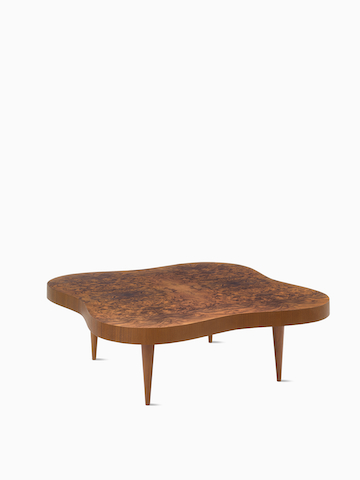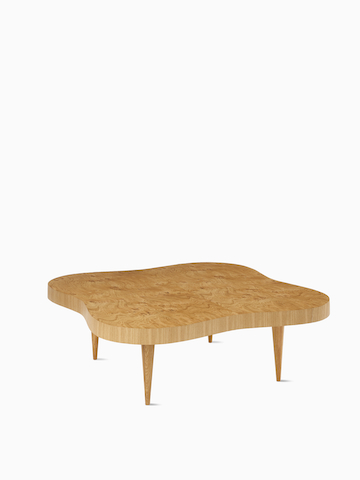Products by Gilbert Rohde
Skip SliderRohde found his way to furniture design after stints in illustration for fashion and department stores. Inspired by his own self-initiated studies and a visit to the Bauhaus, Rohde set forth on a path of Modernist ideals and designing for the masses. His predictions have proved prescient: The domestic landscape was to undergo great change, with smaller spaces and city dwellings becoming increasingly common. Rohde’s then-unorthodox point of views (“The most interesting thing in the home is the people who live there and I’m designing for them.”) would go on to inform Herman Miller’s ongoing approach to human-centered design.
Rohde approached De Pree in Herman Miller’s Grand Rapids, Michigan showroom in search of a producer for his modern furnishings, explaining that the reproduction furniture the company was then making was out of step with modern living and fundamentally dishonest. The moral argument resonated with De Pree. Because they could not afford to purchase the design drawings outright, Rohde agreed to a $100 “consultation fee” and 3% of future sales—the first royalty contract in the industry. De Pree wasn’t immediately hooked—in fact, he thought the designs were plain—but he was out of options and Rohde had made an impression:
At Herman Miller, Rohde demonstrated the impact that design could have on operating a business. He consulted not only on product design, but also evolved manufacturing processes and taught the company how to sell by producing the first catalogs and showrooms devoted to modern furniture. During his tenure as the company’s first design director, sales dramatically improved. De Pree would later consider meeting Rohde to be “providential” because he opened his eyes to a different way of seeing, and in turn, charted the company’s future in modern design. “You’re not just making furniture anymore,” Rohde told De Pree. “You’re making a way of living—a lifestyle.”
The association with Rohde set Herman Miller headlong on the path toward problem-solving design at the forefront of American modernism. Even more importantly, it established a crucial role for outside designers at the heart of the company—a position that Rohde’s successor, George Nelson, expanded upon definitively and used to catapult Herman Miller onto the global stage. “We really stood on Rohde’s shoulders,” Nelson said.




